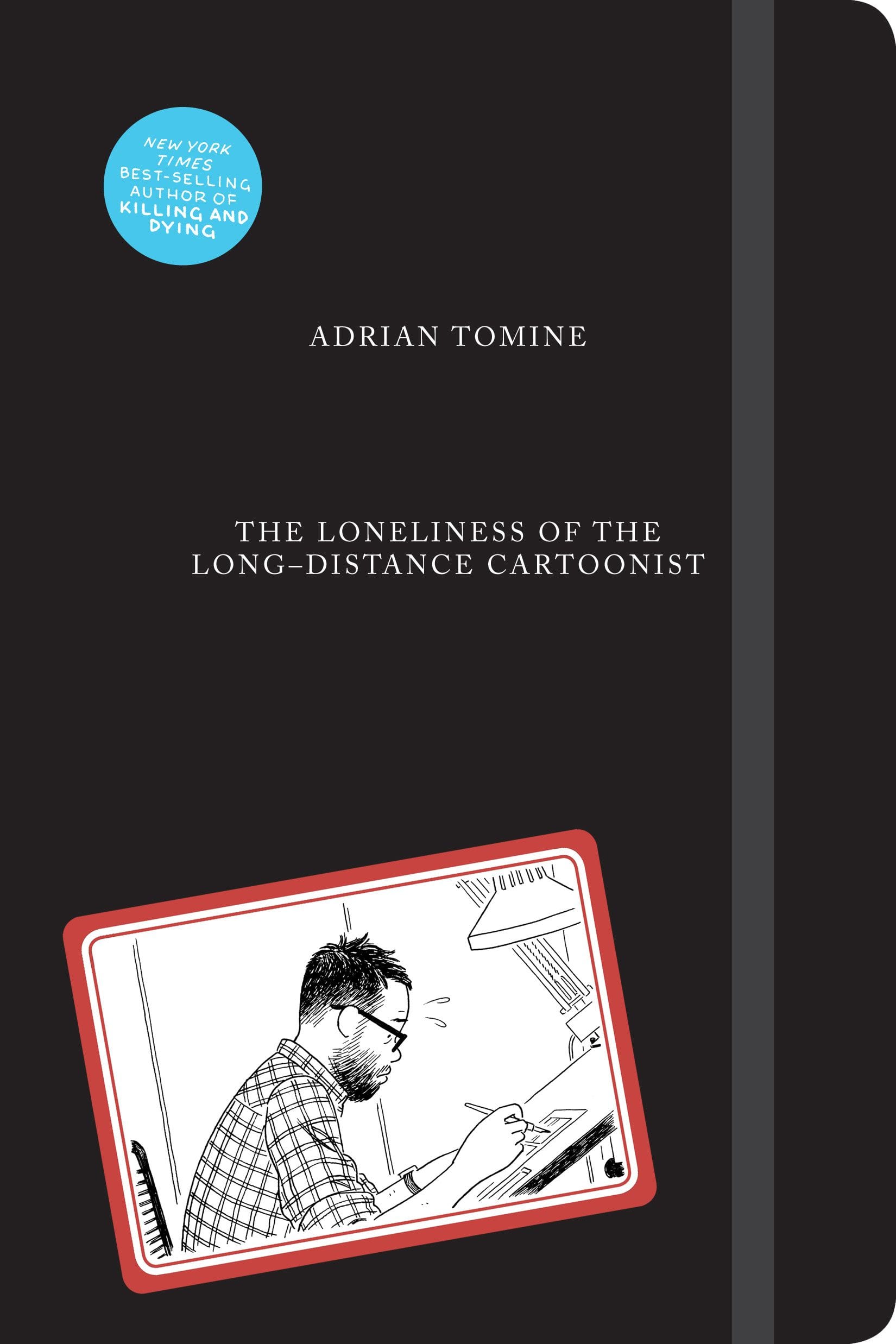
Adrian Tomine‘s autobiographical The Loneliness of the Long-Distance Cartoonist is self-aware, funny, and ultimately a poignant account of the realities of Tomine’s chosen profession. The fact that being a cartoonist is all that Tomine ever wanted is part of what makes the many embarrassments he encounters throughout his career both more difficult and darkly comic, a recurring theme.
The book opens on Tomine’s first day in a new school in 1982. As he goes on and on about his dream of becoming a cartoonist and emulating his favorite artists, his classmates laugh and what begins is a representation of the dichotomy at the heart of Tomine’s memoir: supreme confidence and self-congratulation tempered by humiliation and self-flagellation. Still, even when he’s at his most neurotic, Tomine is easy to empathize with.
As Tomine marvels over his early success, quoting some of his early reviews and getting to meet some of his idols such as Daniel Clowes, he never really allows himself to revel in that happiness and those achievements. Whether beating himself up over his Fresh Air interview with Terry Gross, or feeling self-conscious as he’s filmed walking the streets in France for an interview, or when he loses an Eisner Award and has to will himself not to cry, Tomine seems to be most comfortable when playing the underdog.
Many of the indignities Tomine endures in his professional life are paralleled by the indignities of parenthood. As his daughter throws a tantrum, a stranger stands by in judgment; when he visits his daughter’s school he draws comic poop to the class’s delight, he returns home to a notification from the school apologizing to the kids’ parents. These moments, along with similar moments in his professional life, are relatable because of Tomine’s willingness to be honest about his mistakes and shortcomings. But they also work because they’re often suffused with humor.

(Courtesy of Drawn and Quarterly)

(Courtesy of Drawn and Quarterly)

(Courtesy of Drawn and Quarterly)

(Courtesy of Drawn and Quarterly)
One sequence that brings his job and his family together involves an incident at a restaurant when he and his wife overhear a couple at the next table talking about his book, Summer Blonde. As his work is referred to as “empty, played out Gen-X pseudo-profundity”, he’s understandably mortified. They move from their table, but still manage to hear the conversation continue and as Tomine becomes increasingly more humiliated, his wife is enraged. He has to physically stop her from confronting them and only after they leave that restaurant does he reveal his thoughts: “I’m gonna ask her to marry me.” It’s in that ending that an embarrassing story takes on more weight and it’s the kind of scene that’s especially well-served by the comics medium.
The inward-facing narrative of the book is inherent to an autobiography, but apart from that, the insularity and titular loneliness of the story has a greater resonance during this time of social distancing and isolation. While Tomine’s is a consequence of his job—both in the solitude of a cartoonist’s work and in the traveling he does to promote his work—there are enough similarities to the feelings and fears of current quarantine life to make the story connect in unexpected ways.
The personal, the inner life, and the ongoing reflection on the past all feel very immediate. It’s Tomine’s gift to be able to convey so much in his black ink line drawings on white graph paper. He’s always been able to transcend the everyday and the mundane into moments of connection and emotional resonance. Those qualities are further heightened in The Loneliness of the Long-Distance Cartoonist as his concerns become more profound.
There’s a terrific sequence that ends the book that follows Tomine to the ER with chest pains. His fear is palpable, not only for himself, but also because of the possibility that he may never see his family again. He’s prone to thinking the worst and this is no exception. As he writes a letter to his daughters, it may have seemed morbid or catastrophizing in a pre-pandemic world, but not in these times.
The Loneliness of the Long-Distance Cartoonist is one of Tomine’s best works, and that’s saying something. His foray into the autobiographical isn’t new, but he’d moved away from that in his last release, the excellent Killing and Dying and in earlier stories, such as those featured in Shortcomings. Meanwhile, he’s also managed to contribute a substantial collection of New Yorker covers to his resume. This book highlights that his early success with personal comics was for good reason. Tomine’s talent in communicating the intimate, minute details of his life only serve to make them universal, even moreso now.

(Courtesy of Drawn and Quarterly)

(Courtesy of Drawn and Quarterly)

(Courtesy of Drawn and Quarterly)
(Courtesy of Drawn and Quarterly)
- ADRIAN TOMINE
- Adrian Tomine - Wikipedia
- Adrian Tomine (@adriantomine) • Instagram photos and videos
- Adrian Tomine | Drawn & Quarterly
- Urban Renewal: An Interview with Adrian Tomine
- The Loneliness of the Long-Distance Cartoonist | Drawn & Quarterly
- The Loneliness of the Long-Distance Cartoonist: Tomine, Adrian ...
- The Loneliness of the Long-Distance Cartoonist
- The Loneliness of the Long-Distance Cartoonist: Adrian Tomine ...

